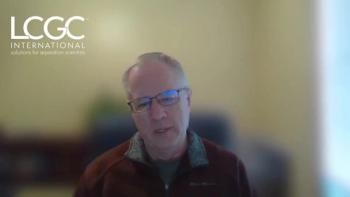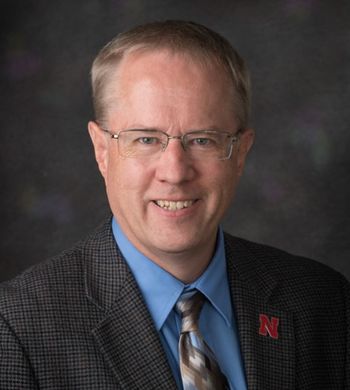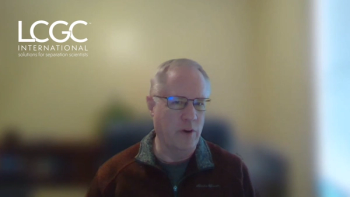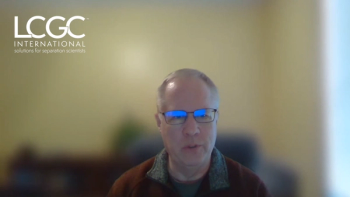
E-Separation Solutions
- E-Separation Solutions-05-01-2014
- Volume 0
- Issue 0
The 2014 Emerging Leader in Chromatography: Andre de Villiers
LCGC recently spoke with the 2014 LCGC Emerging Leader in Chromatography award winner, Andre de Villiers, an Associate Professor of Science at Stellenbosch University in South Africa, about his current research analyzing natural products, his various interests and collaborations in analytical chemistry, and his role as a teacher.
LCGC recently spoke with the 2014 LCGC Emerging Leader in Chromatography award winner, André de Villiers, an Associate Professor of Science at Stellenbosch University in South Africa, about his current research analyzing natural products, his various interests and collaborations in analytical chemistry, and his role as a teacher.
Where or how did your interest in analytical chemistry begin?
De Villiers: My interest in analytical chemistry coincided with the start of my postgraduate studies. Looking back now, it seems a highly fortuitous conglomeration of circumstances that made this possible: Essentially, my career path was determined by a 30-minute discussion with Pat Sandra and Henk Lauer.
In 1999, I was rather unsure about my future plans and was considering various options for M.Sc. studies. In the same year, Professor Sandra was appointed at Stellenbosch University, where I was completing my B.Sc. (Honors) degree, and without knowing much about the field (or Professor Sandra’s renown therein), some fellow students and I went to see Professors Sandra and Lauer about the option of Masters’ studies. After probably less than half an hour, all three of us walked out of the meeting, looked at each other, and agreed that this was what we wanted to do! (I can only hope that one day I might have the same persuasive effect on my students.) Once I started research in separations — at this point it was mainly capillary electrophoresis (CE) — my future career in this field was set, and I have never regretted the decision.
Did winning the 1997 Merck Prize for the best final-year chemistry student or the 1998 South African Chemical Institute James Moir medal affect your academic plans?
De Villiers: The short answer is no. These were nice rewards for working hard during my undergraduate and honors studies, but to be honest at that point I was probably as unsure of my future as most undergraduate students are at the same point. This all changed during my subsequent M.Sc. studies, where my true fascination with research started. A career in academia followed because it provided an environment where I was free to pursue my interest in research.
What was the most important thing you learned in graduate school?
De Villiers: The importance of the combination of hard work and an inquisitive nature is probably the most valuable lesson I learned during this period. While the knowledge gained during my undergraduate studies is obviously still of relevance, the ease of access to information nowadays makes this less of a critical factor. Rather, curiosity and the willingness to spend time learning about a particular topic, are essential to maintain motivation in research.
Since receiving your PhD in 2004, you have published more than 50 peer-reviewed papers and became an Associate Professor at the University of Stellenbosch. How have you accomplished so much in such a short time span?
De Villiers: Once again a large part of this was made possible by a combination of fortuitous circumstances (and of course a fair bit of hard work). I have been fortunate in several aspects during my career thus far. First of all, working in the group of Professor Sandra during my M.Sc. and Ph.D. studies at Stellenbosch University, and afterward in Belgium during my post-doc, I was exposed to leading separation scientists in diverse fields, which has not only contributed to my own scientific development, but also directly influenced my career path. I have been fortunate to maintain contact with many of these leading researchers, and their contributions, either in terms of collaboration or simply in the form of personal discussions, remain essential.
In terms of my academic career at Stellenbosch University, I am severely indebted to my postgraduate students. The first few years of my academic career especially were critically important, since these were focused on establishing an active research group while at the same time developing the courses I taught. This was a steep learning curve, and I am very grateful to the significant contributions made during this period by the first postgraduate students under my supervision. In particular, I should acknowledge the contribution of Dr. Kathithileni (Martha) Kalili. She became my first student at the honors level and has played a pivotal role in developing comprehensive two-dimensional liquid chromatography (LC×LC) expertise in the group during her M.Sc. and Ph.D. studies. This, together with continued collaboration with international scientists, allowed for the continuation of research outputs during this crucial phase of my career.
Furthermore, I have been extremely fortunate in the quality of postgraduate students that have joined my group since these first years — each of them has made a significant contribution, without which the continued output of the group would have been impossible.
Finally, it is important to acknowledge sources of my financial support — this aspect is vital during the establishment of an active research group, and especially so during the first few years. Again, I was privileged that Stellenbosch University and Sasol, in particular, believed enough in what I was doing to support my activities during the period; other significant sources of funding whom I would like to acknowledge include the National Research Foundation of South Africa (NRF, SA), the World Academy of Sciences (TWAS), International Foundation for Science (IFS), and Restek.
What kind of research is your group currently involved in?
De Villiers: Broadly speaking, my group’s research activities focus on developing and applying improved methods for the analysis of complex samples, with special emphasis on natural products that are important in South Africa. Our research, therefore, involves two complementary aspects: exploring the fundamental aspects of gas- and liquid-phase separations to provide improved performance, and application of the developed techniques to solve real-life natural product analytical problems.
Within this framework, our work involves one-dimensional (1D) LC (including recent developments in stationary phases, high pressure, and high temperature), liquid chromatography– multistage mass spectrometry (LC–MSn), LC×LC, 1D gas chromatography (GC)–MS, comprehensive two-dimensional GC (GC×GC), CE, and more recently supercritical fluid chromatography (SFC). LC×LC and GC×GC research, in particular, form the core of our activities, although these techniques build on developments in 1D separations.
The range of applied techniques reflects the complexity of the samples as well as the need for the best suited technology for a given application.
Can you tell us about your work with the chemical characterization of complex mixtures using multidimensional LC and GC combined with MS? How does this relate to the analysis of natural products?
De Villiers: One of the biggest challenges in chromatography is to achieve higher resolving power to allow effective separation of complex mixtures. Considering the extreme complexity of some of the samples being analyzed today (biological samples, natural products, and so on, which contain hundreds to thousands of compounds) and the fact that the peak capacity of a given separation method should significantly exceed the number of compounds to be separated to maximize the likelihood of obtaining “pure” peaks, the importance of improved resolving power is evident. Comprehensive separations are arguably the most effective way of obtaining such performance.
My interest in LC×LC stems from some initial experiments I did during my postdoctoral studies. Upon returning to South Africa, I wanted to apply this technique to one of the most complex analytical problems I had encountered: the analysis of wine tannins. This application was used as basis for LC×LC research in the group, which has since been extended to different natural product constituents.
Being familiar with the benefits of comprehensive LC, I was also interested in GC×GC, although having no experience in the field, initiating projects on this was tricky. I was fortunate to meet Professor Tadeusz Gorecki from the University of Waterloo, Canada, during my post-doc in Ghent, Belgium. At that time, we were working together on LC, but upon returning to Stellenbosch, we initiated a collaboration in the field of GC×GC. Wine analysis was used as the initial application area, although this productive collaboration has since been extended to various natural products.
Multidimensional separation and natural product analysis are, because of the complexity of these samples, “naturally” compatible. The choice of natural products as the focus of much of our research is also largely driven by the unique natural diversity of South Africa, and the economic and scientific importance of many of these products.
In all of this research, MS plays an essential role: MS, high-resolution MS, and tandem MS techniques are used to identify compounds in the samples under investigation, a task that is complicated by the lack of commercially available standards in many cases. In addition, MS, and especially tandem MS, can be used as an extremely selective form of detection in chromatography, something that we have exploited for natural product analysis with some benefit. The significant contemporary development of MS means that the technique will become even more important in the future, although I strongly feel that the importance of chromatographic separation will not be diminished in the process — advanced MS and chromatographic separation should rather be considered as highly complementary techniques.
You have distinguished yourself as a scientist who is trying to overcome the growing disparity between theoretical and practical chromatography. How do you help your students bridge the gap between theoretical and applied chromatography?
De Villiers: Indeed, I firmly believe that the relationship between the theoretical and practical aspects of chromatography is critically important, and becoming even more so in light of recent developments in the field. I am convinced that it is only through a thorough understanding of the fundamentals of chromatographic (or electrophoretic) principles that developments such as those seen today can be optimally exploited.
In light of the increasing use of chromatographic separation in a wide range of research areas, where many practitioners are necessarily not experts in separation science, it is essential to train a sufficient body of researchers who are not only experienced in the application of chromatography and MS, but are also able to guide developments in promising directions based on a thorough grasp of the fundamental possibilities and limitations of each technique.
With this in mind, I endeavor to train my postgraduate students as far as I am able to in both the practical and fundamental aspects of chromatography. This involves both undergraduate teaching, where I place a lot of emphasis on theoretical aspects, and day-to-day research discussions where I try as far as possible to address the underlying reasons for directing research in a particular direction.
In this context I also find it is important to emphasize the work of chromatographic pioneers such as Calvin Giddings, Marcel Golay, and Csaba Horvath. Research by these pioneers underpins much of what is being done today in GC, LC, and multidimensional chromatography, and, in my opinion, it is important to place these developments in context of the historic development of chromatography.
Does the fact that you are based in South Africa, rather than say in Europe or North America, affect your work or your perspective on your work in any way?
De Villiers: Certainly, the fact that I am based in South Africa not only affects my perspective, but also to some extent my research activities. Regarding the latter, this is driven partially by priorities in the local context, which are reflected in the samples we use for application of our research such as wine, rooibos tea, and so on, as well as the urgent need to train researchers experienced in advanced separation technology (something which I think is also becoming increasingly important globally). While the chromatographic community in South Africa is certainly much smaller than in the United States or Europe, the country also has a history of producing influential separation scientists (Victor Pretorius, for example). Furthermore, the local chromatographic community includes very experienced research groups such as that of Professor Ben Burger (with whom I am fortunate to share a laboratory), and industrial research groups such as Sasol, which contributes significantly to local expertise.
From another perspective, however, the location of a particular research group is of less importance nowadays than it would have been say 20 years ago. In today’s electronic age, it is exceedingly easy to maintain close contact with collaborators across the globe by means of email and Skype and, in fact, this has proven invaluable in my research career.
How have your collaborations with various international societies and scientists has benefited your overall research?
De Villiers: It is hard to over-emphasize the importance of this aspect in my research activities. In contemporary chromatographic research, it is exceedingly hard to keep up to date with all the most recent developments. Collaboration with experts in a particular field is the best way to gain experience and allow cross-fertilization.
As I alluded to above, I have been privileged in being able to establish several productive collaborations with leading scientists abroad as well as in South Africa. To list all these collaborators and mentors here would be excessive, but I should mention the important contributions of Professors Pat Sandra, Henk Lauer, Frédéric Lynen, Gert Desmet, Tadeusz Gorecki, and Elizabeth Joubert, and Sasol. Each of these collaborations, and many more not mentioned, has made an invaluable contribution to the scientific development and outputs of my group.
I am convinced that collaboration will become increasingly more important in the future, because interdisciplinary research is already becoming essential in terms of the fundamental development and application of chromatographic science.
What do you plan to focus on next? Is there one big problem in separations science that you really want to tackle?
De Villiers: In terms of specific goals, one of the primary analytical challenges we hope to address involves the analysis of oligomeric and polymeric polyphenols: the so-called tannins. I was first introduced to the complexity of wine tannins during my M.Sc. and Ph.D. studies. When I returned to South Africa I initiated research aimed at applying the recent developments in high performance liquid chromatography (HPLC) I had been exposed to, such as ultrahigh-pressure liquid chromatography (UHPLC), high-temperature liquid chromatography (HTLC), and LC×LC, to tackle this analytical problem.
Tannins are important because of their physiological and sensory properties, and the reason tannin analysis remains one of the big challenges in natural product chemistry is because of their complexity: Tannins are composed of oligomeric and polymeric structures comprising several different monomeric “building blocks.” As a result of the inherent isomeric diversity, which directly determines the chemical properties of these compounds, their complete characterization is not currently possible. We have made some progress through the application of hydrophilic-interaction chromatography (HILIC) coupled with reversed-phase LC separation combined with MS detection, although the application of these high-resolution techniques has also further emphasized the complexity of the analytical problem. Nevertheless, the analysis of tannins presents an ideal challenge for the development and application of multidimensional liquid-based separation methods, which will therefore remain a stimulating research environment for our activities for years to come.
In more general terms, our research is aimed at developing and improving advanced analytical techniques for more-detailed and accurate analysis of complex samples. The importance of these endeavors is supported by the increasing demand for high quality analytical data driven by diverse research fields such as metabolomics; biological, industrial, and forensic sciences; and natural products chemistry. Contemporary developments in separation science, notably in LC×LC, GC×GC, and MS, and the recent resurgence in interest in alternative separation techniques such as CE and SFC, makes this an extremely interesting and rewarding time to be doing this type of research. I look forward to the challenge of contributing to developments in the field.
Related content:
Articles in this issue
over 11 years ago
An emerging leader in separation scienceNewsletter
Join the global community of analytical scientists who trust LCGC for insights on the latest techniques, trends, and expert solutions in chromatography.




